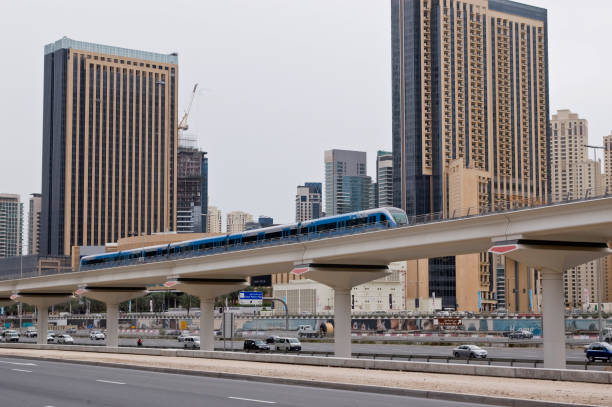In the dynamic landscape of the United Arab Emirates, the integration of airways and railways stands as a testament to the nation’s commitment to modern and efficient transportation systems. The seamless coordination between airways and railways in UAE creates a comprehensive network that enhances connectivity and facilitates the smooth movement of people and goods. With world-class airports and cutting-edge railway projects, the UAE’s airways and railways not only cater to domestic travel but also play a crucial role in facilitating international connections.
This integration reflects the forward-thinking approach of the UAE in providing diverse and interconnected modes of transportation to meet the growing demands of a globalized world. Join us in exploring the intricacies of airways and railways in UAE, where technological advancements and strategic planning converge to create a transportation landscape that supports the nation’s economic activities and ensures efficient mobility.
UAE has rapidly developed its transportation infrastructure to cater to the growing needs of both residents and tourists. In addition to extensive road networks, the UAE boasts a well-connected air and rail transport system. The nation’s airports, including Dubai International Airport, have become global aviation hubs, while the railway system, exemplified by the Etihad Rail project, holds the promise of further enhancing the country’s connectivity.
Airways and Railways in UAE
Rotana Jet offers a range of services, including executive charter and scheduled airline services, providing options for various travel needs. On the other hand, Royal Jet specializes in chartered flights, offering a personalized and luxurious air travel experience.
The UAE’s railway system, represented by Etihad Rail, entered commercial operations in 2016 following the successful completion of its initial network stage. Discover more about the current state and future developments of the railway system in the UAE, which promises to further enhance the nation’s transportation infrastructure.
Like Airways and Railways in UAE, You may also like to read about Accessible Transport and Parking for Disabled in UAE.
Airlines
Several airlines provide domestic services within the UAE, including:
Rotana Jet: Rotana Jet offers a versatile range of services, including executive charter and scheduled airline services. It serves both domestic and international routes with flights to and from Abu Dhabi.
Royal Jet: Headquartered in Abu Dhabi, Royal Jet is a joint venture between Abu Dhabi Aviation and Presidential Flight. Specializing in chartered flights, it operates from Abu Dhabi International Airport.
For convenient booking of flights on Rotana Jet and Royal Jet, travelers can make reservations as per their preferences and travel needs.

Railways
Railway in UAE is as follows…
Etihad Rail
Etihad Rail stands as the UAE’s national railway system, serving to connect all seven emirates and foster ties with five other GCC nations: the Kingdom of Bahrain, the Kingdom of Saudi Arabia, Qatar, the State of Kuwait, and the Sultanate of Oman. Its construction aims to develop a high-quality, dependable, and sustainable transportation infrastructure to enhance economic development and well-being, with a strong emphasis on providing affordable and equitable access for all.
Scope and Coverage
The extensive Etihad Rail network will span a length of 1,200 kilometers, stretching southward to the Saudi Arabian border and extending eastward to reach Oman. It will encompass numerous freight terminals, distribution centers, and depots strategically positioned near major transportation hubs, warehouses, and storage facilities across the UAE.

Service Expansion - Phase One
Etihad Rail began its commercial operations in January 2016 after the successful completion of phase one. This initial segment, covering 264 kilometers, runs from Shah and Habshan (home to gas fields in Abu Dhabi) to the port in Ruwais on the emirate’s western coast. To date, Etihad Rail has facilitated the transportation of over 30 million tonnes of granulated Sulphur for the Abu Dhabi National Oil Company (ADNOC). This substantial volume equates to approximately 1.8 million trucks, showcasing the rail system’s capacity, with the ability to transport 22,000 tonnes of granulated sulfur daily.
Advantages
The Etihad Rail network offers numerous benefits, including reduced freight costs and shorter business travel times. It creates connections between various regions, fostering the expansion of industries and communities. This, in turn, contributes to economic, social, and cultural growth by generating new employment opportunities and industrial diversity. Furthermore, the rail system has a significantly lower environmental impact, reducing carbon dioxide emissions by 70-80% compared to the emissions produced by trucks tasked with transporting the same tonnage, exemplifying its commitment to environmental sustainability.
Conclusion
In conclusion, the seamless integration of airways and railways in UAE exemplifies the nation’s commitment to fostering efficient and modern transportation networks. Understanding the harmonious interplay between airways and railways in UAE unveils a robust system that not only connects the nation domestically but also facilitates international travel with ease.
Exploring the comprehensive landscape of airways and railways in UAE reveals a well-coordinated infrastructure. The airways, exemplified by world-class airports, serve as vital gateways, ensuring global connectivity. Simultaneously, the development of railways, highlighted by projects like the Etihad Rail, reflects a commitment to sustainable and interconnected inland transportation.
The practical implications of airways and railways in UAE extend beyond convenience; they contribute significantly to economic activities and the movement of people and goods. Whether soaring through the skies or traveling across the land, the synergy between air and rail travel enhances accessibility and connectivity, supporting the UAE’s position as a hub of global commerce.
As we conclude our exploration of airways and railways in UAE, it’s evident that this integration plays a pivotal role in shaping the nation’s transportation landscape. The continuous development and coordination between airways and railways underscore the UAE’s dedication to providing efficient and modern transportation options for its residents and visitors alike.

